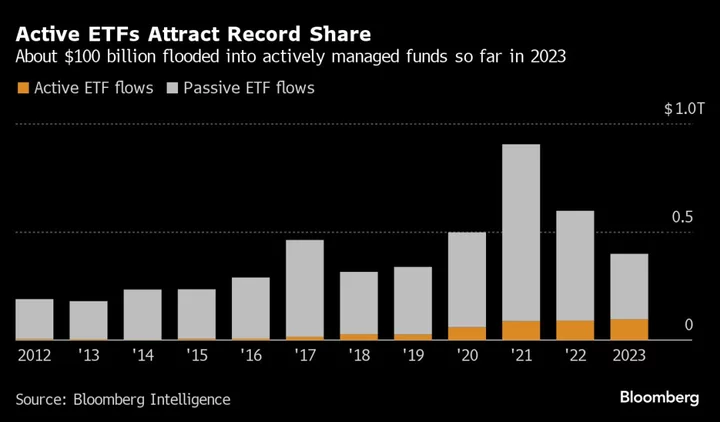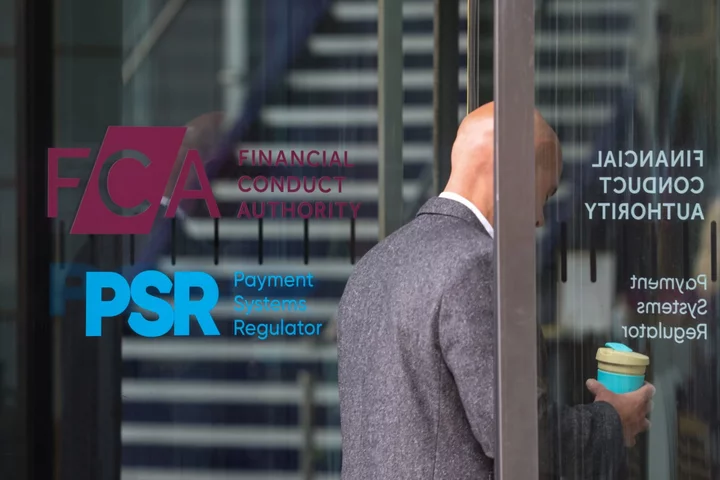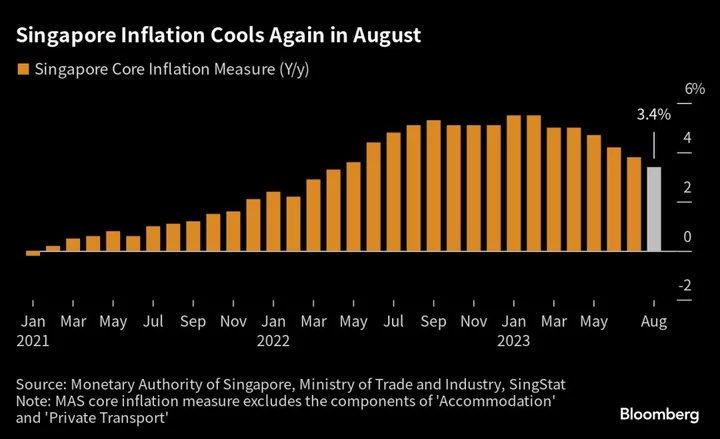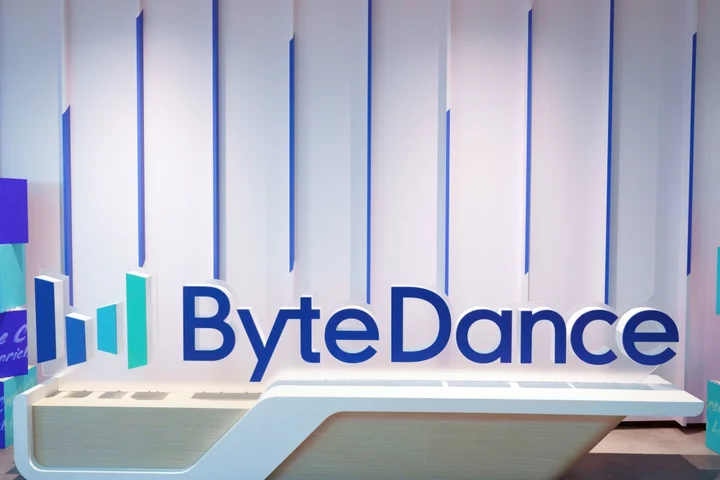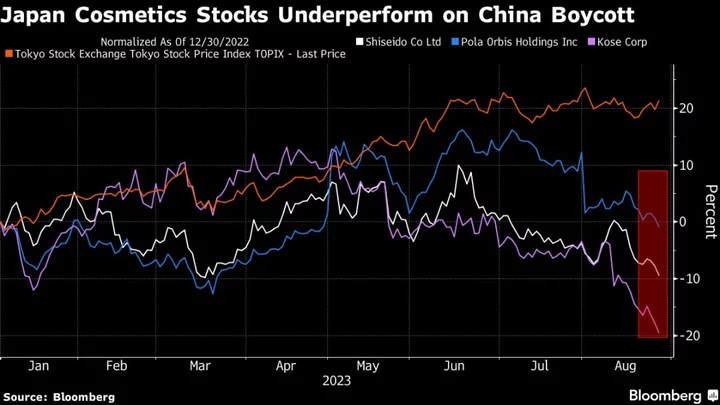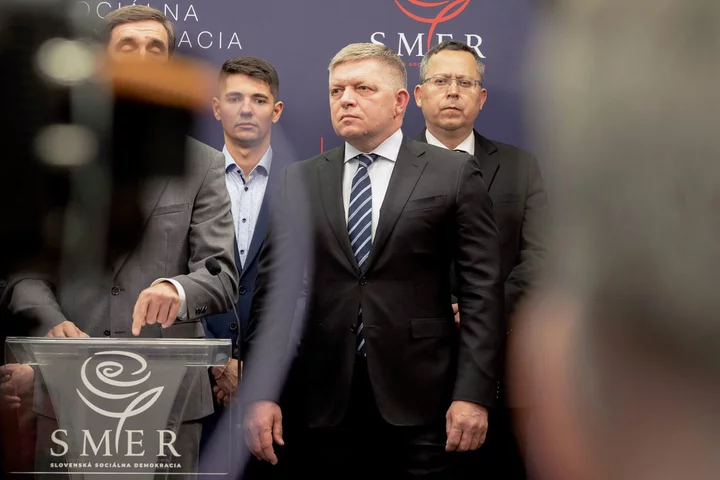At first blush, a record $100 billion flood into actively managed exchange-traded funds this year raises a tantalizing prospect: A revival of stockpicking even as only Big Tech names outperform the market. Yet, a look under the hood of popular ETFs shows the boom is almost entirely taking place in passive-looking trades.
Active strategies have attracted nearly 25% of the $423 billion that’s flowed to US ETFs so far in 2023 — a record share. Meanwhile, active ETFs are launching at a record pace, making up 96% of October’s new debuts as issuers race to stake claim to a quickly growing corner of the $7.5 trillion industry, Bloomberg Intelligence data show.
But those billions aren’t being sent to the likes of traditional bond- and stockpickers. Rather, firms like Dimensional Fund Advisors and JPMorgan Asset Management have led the charge. Dimensional, the largest active ETF issuer with roughly $100 billion in assets, is known for its systematic funds. Meanwhile, JPMorgan has struck gold with its suite of covered-call ETFs, which employ options overlay strategies to generate additional yield.
While not simple index-tracking stock funds, the kind of active management catching fire at the moment is much different than placing high-conviction calls, according to ETFGI’s Deborah Fuhr.
“You don’t find a lot of active managers taking a lot of active bets,” said Fuhr, the firm’s co-founder. “It’s not fundamental active, like doing a lot of homework on the stocks and deciding what to buy. It’s more systematic.”
Contrast that to Cathie Wood, whose $7.7 billion ARK Innovation ETF (ticker ARKK) is the posterchild for stockpicking in the ETF wrapper. The fund’s portfolio of high-flying, disruption-themed stocks soared nearly 150% in 2020. But that performance was followed by two years of double-digit losses. During that stretch, the $30 billion JPMorgan Equity Premium Income ETF (JEPI) shattered ARKK’s record for active inflows, on track to becoming the largest active ETF.
Now, even though ARKK has surged 35% this year, the fund is still sitting on significant outflows year-to-date. Instead, JPMorgan’s covered-call ETFs and Dimensional funds are perched atop the leaderboard this year.
Passive Is Fine
Dimensional’s Gerard O’Reilly isn’t shying away from the “passive” label. While the quant firm isn’t trying to beat out the market by identifying stocks with moonshot potential, he said being tied to a benchmark isn’t the best way to approach investing either.
“Indexing is too rigid. You leave money on the table and so we’re non-index, but we’re not in the business of trying to outguess market prices,” O’Reilly, Dimensional’s co-CEO and chief investment officer, said on Bloomberg’s Odd Lots podcast. “So passive is probably fine because passive implies that you accept market prices, you trust market prices and you try to extract information from market prices.”
Despite the fact that some of the most popular active strategies are lagging indexes this year, money is still flooding in. JEPI and the $22 billion Dimensional US Core Equity 2 ETF (DFAC), for example, have climbed about 6.6% and 12.6%, respectively, on a total return basis so far in 2023. That compares to a 19% return for the S&P 500.
Important Gauge
While the bulk of this year’s active inflows have been delivered to systematic or outcome-oriented strategies, several traditional bond- and stockpicking ETFs debuted this year. In May, Rick Rieder, BlackRock Inc.’s chief investment officer of global fixed income, unveiled the BlackRock Flexible Income ETF (BINC), followed by Pacific Investment Management Co. Chief Investment Officer Dan Ivascyn’s PIMCO Multisector Bond Active ETF (PYLD) a month later.
Both bond funds have outperformed the Bloomberg Aggregate Bond Index since inception, despite a challenging backdrop for fixed income amid the Federal Reserve’s interest rate-hiking campaign. Their success — or failure — will be an important barometer of demand for old-school active, said Morningstar Inc.’s Ben Johnson.
“This year, we’ve seen some real marquee names come to market in the ETF wrapper for the first time. What’s going to be the future trajectory of flows for those funds?” said Johnson, the firm’s head of client solutions. “Funds like those will be the real litmus test for the prospects for what people would more conventionally identify as active packaged in the wrapper.”

